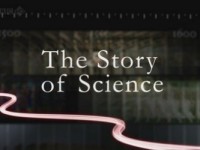You walk into an elevator and push the button for your desired
floor. The button lights up. The elevator stops at the next floor and
another person enters. He or she pushes the same button that’s already
lit up.
According to Dario Maestripieri’s new book, “
Games Primates Play,”
that elevator ride represents a game of dominance — similar to those
exhibited by other primates. The University of Chicago professor argues
that our social relationships have analogs in nature, especially within
groups of primates. While we may not go up and grab our supervisor’s
genitals as a sign of respect, we engage in similar acts that help us
figure out where we fit in groups.
By exploring our social lives through the lens of an evolutionary
biologist, Maestripieri breaks down the most routine of social
interactions into deeply embedded behaviors from our genetic forebears.
Just like humans, other primates grapple with questions of dominance,
reciprocation, nepotism and fidelity. He demonstrates how his own life,
the lives of celebrities, and corporate success strategies all derive
from a single, primal need to find our place in a group.
Salon spoke with Maestripieri about the primal instincts we exhibit
in our emails, whether altruism exists, how nepotism is natural, and why
it matters to study our everyday nature.
Why are primates such good indicators for understanding human behavior?
Because humans are primates. We are closely related to them, so we
are very similar in many things. Our anatomy, morphology, behavior — we
also live in pretty similar environments. We’re confronted with most of
the same problems, and sometimes we come up with the same solutions.
You call these “games,” but reading the book, with topics
like establishing dominance, where a primate might just rip off
another’s testicles, it all seems very serious. How are these considered
games?
The title was inspired by the bestselling book from the 1960s called
“Games People Play,” which was about human relationships, and the idea
was that there are patterns that tend to recur in human relationships.
It’s not true that every relationship is unique and different from all
the others — there are underlying rules, and patterns, and things that
recur. In my book I try to question what these patterns are, what are
these rules that we use, where they come from, why they exist, and
whether they’re good or bad for us. They’re not necessarily games in the
traditional sense, but we tend to do these things like “tit for tat,”
reciprocation, altruism, punishment — and there’s a lot of similarities
to what a primate does, definitely some of the same patterns.
And sometimes they really are like a real game. I use game theory to explain the way we behave.
You talk about a whole world of competition that is done in
the dark, how we’ll take advantage of others when we know we won’t get
caught. Is there such a thing as altruism, or is that a fallacy?
We look at trends of behavior. I try to explain how, on average,
people behave in certain situations. I don’t try to explain the behavior
of all individuals. Every statement that scientists make is about the
average behavior. Even during the 1977 blackout in New York City, there
were people who were amazingly good and helpful and didn’t commit
crimes. Still, a lot of people did. You can explain that on average,
when it’s dark, when you can commit a crime and not get caught, more
people have a tendency to commit crime. But not everyone. Altruism is
the same thing. Many people behave altruistically without any
compensation, without any reward or benefit. But, on average, more
people are willing to commit a crime. Altruism becomes something that
can be reciprocated if you use it to gain a reputation, something like
that. It’s not random, and there are trends, but not everybody has to
behave that way. Not everyone has to commit a crime.
How does this correspond to popular movements, like protests or upheavals?
I don’t know. There are other disciplines like sociology to explain
things on that large scale. I’m not that interested in explaining mass
movements. I’m more interested in discussing relationships. Primates do
form complex societies, but they don’t organize themselves into
movements like humans do.
Do we create these group structures — the office, the academy
— because we’re part of this evolutionary chain of group-oriented
animals?
We live in a society that is incredibly structured. It has very rigid
dynamics, so that if you want to be successful, you can’t do it on your
own. You have to make friends and protect yourself from the enemy.
You’ll have family members help you. This is an integral part of human
life. Imagine politics. You can’t be successful in politics unless you
make friends, alliances, engage in games of reciprocation, of favors,
like “You do this for me, I’ll do this for you.” It’s inevitable.
Whenever we form groups, whether it’s teams or companies, dominance
hierarchies will develop within each group because that’s human nature.
When people are naturally competitive, they’ll be the dominators. I like
to explain why it is that when you put people in a group, they
immediately form a hierarchy. Why when you put two people together, one
has to be dominant and one has to be subordinate. There can’t be a
romantic relationship between two people where there’s no dominant one.
It’s impossible. I’d like to challenge someone to show me how two people
can be together and not have a dominance relationship where one is in
charge and the other isn’t. I explain why dominance is such a pervasive
part of human relationships.
You make an argument in favor of the naturalness of nepotism.
It’s natural. But the problem with human nepotism is that when it’s
implemented, then rules are broken, laws are broken, and crimes are
committed. So because we have a social charter and rules we’ve
established that regulate our societies, nepotism can become criminal.
The fact that something is natural doesn’t make it acceptable ethically,
legally or socially. In nature, there is no morality. Nepotism just is.
Nepotism exists in society, but we decide that it’s morally and legally
wrong. So it becomes a big issue.
You use personal anecdotes to prove some of your points. When
did you realize your life was something that mirrored the animals you
studied? Has behavior always been a fascination?
It has been from the very beginning of my life. I became interested
in studying animal behavior and evolutionary biology because I wanted to
explain my own behavior, and the behavior of people around me, and when
I began studying primates, I suddenly realized there were all these
similarities.
There are all these other scientific approaches to the study of
behavior, and I think they only explain general patterns, very broad
trends. Why are young women attracted to older men with a lot of money?
What men and women want, and what they do. But what I try to do in this
book is show that you can explain scientifically even very fine details
of behavior, of everyday situations. The way you act in an elevator, the
way you act in the workplace, the way you act with your boss, at home
with your partner, with your kids. You can have science explain even
small details of everyday behavior. Things that trouble people can be
explained by biology — which is one of my goals.
You write that you can look at someone’s emails and tell
whether they’ll succeed or not, based on primate behavior. How much of
our life is dictated by primal urges? Doesn’t self-awareness change
everything?
“Dictated” is not the right word. The right word is “tendency.” We
have tendencies, propensities, so whenever we confront particular
problems, we have a tendency to act a certain way. One of the points I
try to make is that human nature, our primal heritage, mostly appears in
our social behavior. So there are things that humans do, like engaging
in complex thought, abstract thinking, the arts, human morality — these
are things we’re able to do because of our cognitive abilities. You
can’t find parallels in the animal world. But when it comes to basic
things, like being afraid of strangers, or being worried that your
partner is going to cheat on you — these are problems that are not
recent. Animals, especially primates, have been dealing with these
problems for millions of years. We haven’t come up with any new
solutions to these problems — any solutions that have worked, anyway. We
have some preprogrammed tendencies to solve these problems. We could
always choose not to solve them a certain way. People can choose
whatever they want. But we’re being pushed in a certain direction by
human nature.
How, by understanding “human nature,” can we improve our actions? Or are we just destined to do these things?
One thing that I always try to make very clear is that biology isn’t
destiny. The fact that we have biological propensities to act a certain
way doesn’t mean we have to do it that way. We can change our
environment. We can choose to be whatever we want. Knowledge of these
propensities is helpful. If you want to modify behavior, though, you
have to understand it first. To be happy, you have to understand what it
is that makes people happy and why people behave in certain ways.
If everything was random, there’d be no roles, and everything would
be different. But there are roles; there are reasons why people behave
the way they do. So understanding this behavior is very helpful.
You use a lot of examples from popular culture, of
celebrities, to help explain some of your research. How is that helpful
for explaining these concepts?
The lives of celebrities are very public. We can all relate to them.
That’s why we’re so interested. We can always relate to the issues of
marriage, and divorce, and having kids. Everybody knows about Brad Pitt
and Angelina Jolie. You can use science to explain why a friend of mine
got divorced, but no one would know him. So obviously it makes sense to
explain the behavior of people better known.
It seems like every facet of life is mirrored by the
primates. What isn’t? What is original to humans? Was there some point
where you said, “This is just something really weird that humans do.”
Of course! There’s a lot I left out. I focused on social behavior and
relationships. I did a book on relationships, but they’re not
everything. Humans might choose to live a solitary life where you have
no relationships and still be a good human being. I don’t try to explain
everything. People doing things that are intellectual, their art,
people who sacrifice themselves — human life is very complex. I focus on
human relationships. Relationships are a crucial part of our lives. As I
explain in the book, one universal thing about human life is that you
see some of the same people every day of your life. Whether it’s
friends, co-workers, enemies, there are recurring problems. How do you
make friends, how do you keep them, how do you find a partner, how do
you keep in touch with relatives — these are the things I focus on.
Evolutionary biology and economics can help explain them, because these
problems are nothing new.
Because you’ve brought your study into the world of your own
personal interactions, how has your awareness of the world changed? Do
friends ask you to stop studying them when they’re just trying to have a
pleasant conversation?
I’ve always been like this. I’ve always been curious about people’s
behaviors. That’s why I entered the profession. Writing this book hasn’t
changed the way I live my life, but I understand things much better
than before. Everything can be studied. Behavior is a legitimate subject
for scientific inquiry, just like everything else. Some people have
issues with this idea because they feel that behavior is just a product
of free will. The way you behave is the product of your conscious
decisions. How can you explain scientifically what people do? They think
behavior is arbitrary. But it isn’t! If you observe primates, you see
there’s shared behavior across all different types of species. Behavior
is fascinating because we’re all different, but at the same time, we’re
not so different. So we like to think we’re different, but, not all that
much.

















